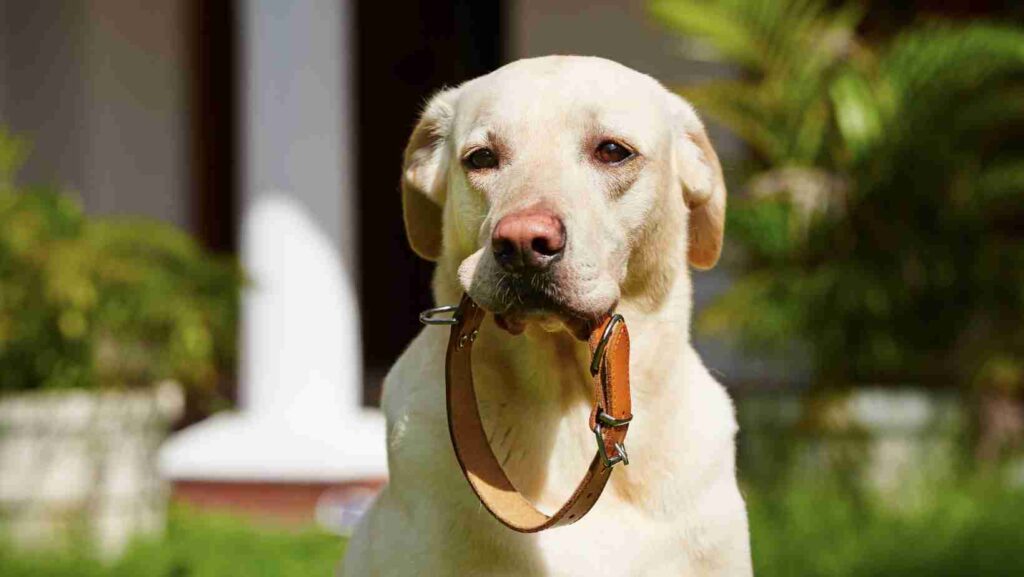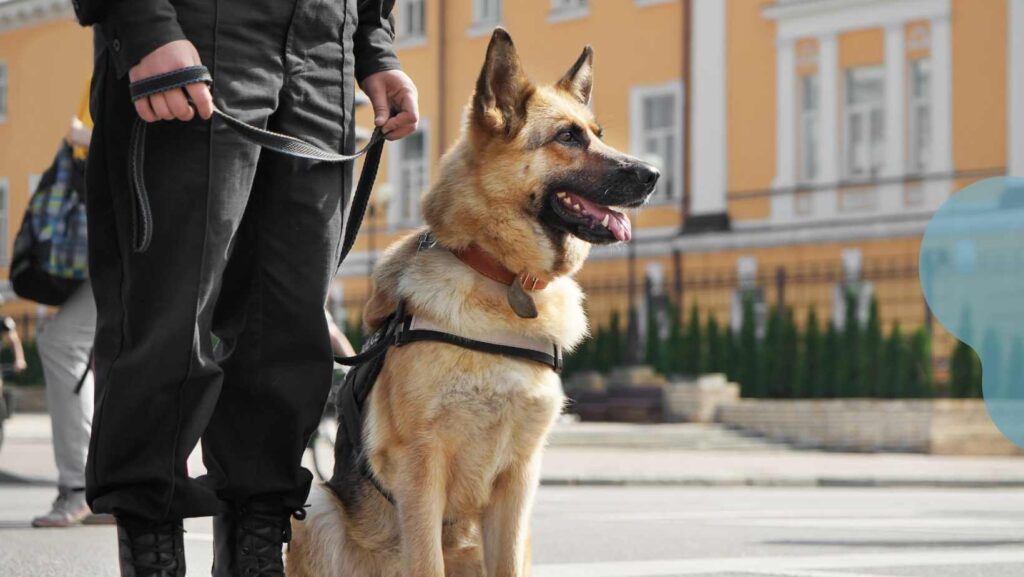Introduction
If you have a dog with a thick fur coat, you might wonder whether a shock collar would effectively train your furry friend. Dogs with thick double-coated fur, such as Golden Retrievers, Labradors, Huskies, Pyrenees, and Border Collies, can present challenges when using shock collars with prongs.
This is a well-known issue, but fortunately, many brands such as SportsDog, Educator, and Dogtra offer products with longer prongs that can help overcome this problem. in this Article I will cove the answer of this question: is your dog’s fur too thick for a shock collar? so, Lets get started.
Understanding Shock Collars
Before diving into whether shock collar for dogs thick fur are effective, it’s important to understand how they work. Shock collars are electronic devices designed to deliver a small electric shock to dogs when they misbehave. This shock is intended to be unpleasant enough to discourage the dog from repeating the behavior in the future. While shock collars can be effective in certain situations, they are not appropriate for all dogs and should only be used under the guidance of a professional dog trainer.
The Effectiveness of Shock Collar for Dogs Thick Fur
While shock collars can be effective on dogs with thick fur, they may be less effective on dogs with thick fur. The fur can be a barrier, preventing the electric shock from reaching the dog’s skin. In some cases, the fur may be so thick that the shock collar is completely ineffective, making it a waste of money and potentially harmful to your dog.
Alternatives to shock collars for thick-furred dogs
Fortunately, there are alternatives to using shock collars for thick-furred dogs. Some of these alternatives include:
- Positive reinforcement training: Using rewards to encourage good behavior rather than punishing bad behavior.
- Clicker training: Using a clicker to signal the dog that it has done something correctly and rewarding the dog for the correct behavior.
- Spray collars: Collars that spray a harmless mist of citronella or water when the dog exhibits unwanted behavior
- Training tips for thick-furred dogs: Use a vibration collar instead of a shock collar: A vibration collar emits a vibration rather than a shock. This can be a more humane alternative for thick-furred dogs and still effectively correct behavior.
- Use a longer electrode: If you decide to use a shock collar on a thick-furred dog, choose a collar with longer electrodes. This will ensure the electrodes make better contact with the dog’s skin, increasing the collar’s effectiveness.
- Trim the fur: If your dog’s fur is particularly long or dense consider trimming it where the electrodes need to contact the skin. This will help to ensure that the collar is as effective as possible.
- Be patient: Training a thick-furred dog can be challenging, so being patient and consistent with your training is important. Use positive reinforcement techniques, and don’t rely solely on a shock collar to correct behavior.
Potential Risks of Using a Shock Collar on Dogs with Thick Fur
- Skin irritation
- Burns
- Electric shock
- Stress and anxiety
7-Step Formula for Using a Shock Collar on Dogs with Thick Fur
To use a shock collar on a dog with thick fur safely, follow these 7 steps:
Step 1: Choose the Right Collar
When it comes to dogs with thick fur here are three types of collars that are a good choice for dogs with thick fur:
- Martingale collar: This type of collar is designed to prevent dogs from slipping out of their collar. It has a limited slip function that tightens when the dog pulls but does not choke the dog. This collar is a good choice for dogs with thick fur as it has a looser fit and does not interfere with the fur as much.
- Harness: A harness is a good choice for dogs with thick fur as it distributes the pressure from pulling across the dog’s chest and shoulders instead of just its neck. Several types of harnesses are available, including front-clip, back-clip, and no-pull options.
- Quick-release collar: This type is designed to quickly release if the dog becomes tangled or caught on something. It has a buckle that easily opens and releases the collar making it a safe option for dogs with thick fur.
After mentioning the above three collars, I want to remind you. Remember to check the collar’s material, size, and purpose while buying the right shock collar for your dog with thick fur. However, these 3 collars will guide you in buying the collar.
Step 2: Test the Collar
Before using the collar on your dog test it on yourself or another person to ensure it’s working properly and not too powerful. Here are the steps to test the collar:
- Turn on the collar: Most shock collars have an on/off button or switch. Please turn on the collar and make sure it is functioning properly.
- Attach the collar: Put it on your dog and ensure it is properly positioned and fitted according to the manufacturer’s instructions.
- Test the collar: Choose the lowest stimulation level and test the collar by pressing the button or activating the remote control. Observe your dog’s reaction. If they show signs of discomfort or distress, stop the test immediately and reevaluate the fit and positioning of the collar.
- Increase the stimulation level: Gradually increase the stimulation level, observing your dog’s reaction at each level. Stop if your dog shows signs of discomfort or distress.
- Monitor your dog: After testing the collar monitor it for any signs of discomfort, such as scratching or shaking its head. If you notice any discomfort or distress, discontinue using the collar and consult a veterinarian or professional dog trainer.
Step 3: Adjust the Collar’s Fit
Before Adjusting the collars, ensure you measure the right size of the collar.
How to measure the size of Shock Collar for Dogs Thick Fur
Always consider the fur while measuring for a shock collar for a dog with thick fur. Here are the steps:
- Measure the circumference of your dog’s neck: Use a soft measuring tape to measure the circumference of your dog’s neck at the base, where the collar would sit. Make sure to measure snugly but not too tightly.
- Add length for fur: If your dog has thick fur, add an inch or two to the measurement to ensure the collar will fit comfortably over the fur.
- Check the manufacturer’s sizing chart: Different manufacturers may have slightly different sizing guidelines for their collars, so it is important to check their sizing chart to ensure you purchase the correct size for your dog.
Adjusting the fit of your dog’s collar is an important step to ensure their comfort and safety. Here are the steps to adjust the collar’s fit:
- Check the fit: Before adjusting the collar, ensure it is in a comfortable position on your dog’s neck. The collar should be snug but not too tight. You should be able to fit two fingers between the collar and your dog’s neck.
Follow 2 Finger Distance Rule
The rule of the two-finger distance test ensures that a shock collar fits properly on a dog’s neck. The collar should fit snugly but not tight and you should be able to fit two fingers between the collar and the dog’s skin. This ensures that the collar is not too loose and will not slip off but also not too tight and won’t cause any discomfort or harm to the dog.
- Loosen the collar: To adjust the collar, start by loosening it. Most collars have a buckle or clip that are adjustable to make the collar larger or smaller. Loosen the collar until you can easily slide it off your dog’s neck.
- Reposition: Once the collar is off, reposition it on your dog’s neck. The collar should sit high on the neck, just below the ears. This is the narrowest part of the neck and where the collar is most secure.
- Tighten the collar: After repositioning it, tighten it until it is snug but not too tight. Remember to use the two-finger distance rule to ensure the collar is tight.
- Check the fit again: After adjusting the collar, check the fit again to make sure it is snug and secure. Make any necessary adjustments until you are feel satisfaction with the fit.
Step 4: Start with the Lowest Setting
When using the shock collar for the first time please start with the lowest setting and gradually increase it as needed. Always consider these points while starting:
- Consider the dog’s size and weight, and check the manufacturer’s instructions for recommended levels.
- Consider the dog’s sensitivity to stimulation to prevent overstimulation and discomfort.
- Determine the behavior to correct and start with the lowest level of effective stimulation for that behavior.
- Consider overall training goals and start with the lowest level that helps achieve those goals.
- Observe the dog’s reaction to stimulation and adjust accordingly (Do not hurt the dog)
- Lower stimulation level or discontinue use of the collar if the dog shows signs of discomfort or distress.
Step 5: Watch for Signs of Discomfort
When testing a shock collar on a dog, it is important to keep an eye on the following signs:
- Vocalization: Watch for signs of discomfort or pain, such as whining, yelping, or howling.
- Body language: Observe the dog’s body language for signs of discomfort or stress, such as shaking, panting, or avoiding eye contact.
- Licking or scratching: Watch for excessive licking or scratching around the area where the collar is placed, which may indicate discomfort.
- Avoidance behavior: If the dog tries to avoid the collar or retreats when it is being placed, this may be a sign of discomfort or fear.
- Changes in behavior: Watch for changes in behavior, such as aggression or fearfulness, which may indicate that the collar is causing stress or discomfort.
If you observe any of these signs, adjusting the collar’s fit or stimulation level or discontinuing using it together is important.
Step 6: Shave the Dog’s Neck
Shaving the dog’s neck can be helpful when using a shock collar in the following ways:
- Improved contact: Shaving the dog’s neck can improve the contact between the collar’s electrodes and the dog’s skin, which can improve the effectiveness of the collar’s stimulation.
- Avoidance of matting: Thick fur can become matted and prevent the collar from properly contacting the skin. Shaving the neck can prevent this from happening.
- Better hygiene: Shaving the neck can improve the hygiene around the collar area, making it easier to clean and disinfect the skin.
- Easier fitting: A shaved neck makes it easier to fit the collar properly, ensuring that the electrodes are properly positioned on the dog’s skin.
- Comfort: Removing excess fur from the neck can make the collar more comfortable for the dog to wear, as it reduces the likelihood of matting, tangling, and discomfort from the collar rubbing against the fur.
Still Problematic?
Step 7: Change the Collar
If you still feel the issues, You need to change the collars. Instead of a traditional buckle collar, consider using a strap that loops around the transmitter. This option is available from brands like Lupine or a bungee strap. These alternatives are very convenient to snap or put on your dog like a sweater. The Lupine-like strap helps ensure the collar is the right size for your dog, while the bungee collar is designed for maximum convenience.
For your convenience, I suggest some best collars, i.e., PetSafe Martingale Collar, Blue-9 Balance Harness, YardTrainer, and Kurgo Waterproof Muck Collar.
Conclusion
If you have a dog with thick fur, it’s important to consider whether or not a shock collar will effectively train them. While shock collars can be useful in certain situations, they may not be effective on dogs with thick fur. Alternative training methods, such as vibration collars and positive reinforcement training, may be more effective and humane. Before using a shock collar, it’s important to consult a professional dog trainer to determine whether or not it’s appropriate for your dog’s specific needs.
FAQs
Are shock collars safe for dogs?
When used properly and under the guidance of a professional dog trainer, shock collars can be safe for dogs. However, they should only be used in specific training situations and with the safety and well-being of the dog in mind.
Can vibration collars be used on all dogs?
Vibration collars can be used on most dogs, including those with thick fur.








